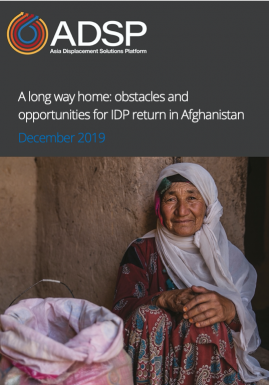A long way home: obstacles and opportunities for IDP return
While durable solutions still remain out of reach for Afghanistan’s internally displaced persons (IDPs), with estimates of 2.2 million IDPs last recorded in 2017, evidence related to durable solutions – and specifically to the return of IDPs – is widely lacking. Research on internal displacement has focused on setting local integration on the policy agenda, yet no research study in Afghanistan has focused on what happens after their return ‘home’. To support enhanced access to populations in need across Afghanistan, and achieve durable solutions processes for Afghanistan’s displaced, more knowledge is needed on the practices, attitudes, and preferences of IDPs themselves.
This study attempts to address this gap by studying IDPs’ spontaneous returns to communities across Afghanistan. The report looks at six community case studies in selected provinces of IDP return, and synthesises the findings to highlight the factors which drive IDP returns as a process, including an examination of similar and contrasting priorities across areas, key challenges and opportunities upon return, and the identification of key principles for IDP returns.
A long way home: obstacles and opportunities for IDP returns

